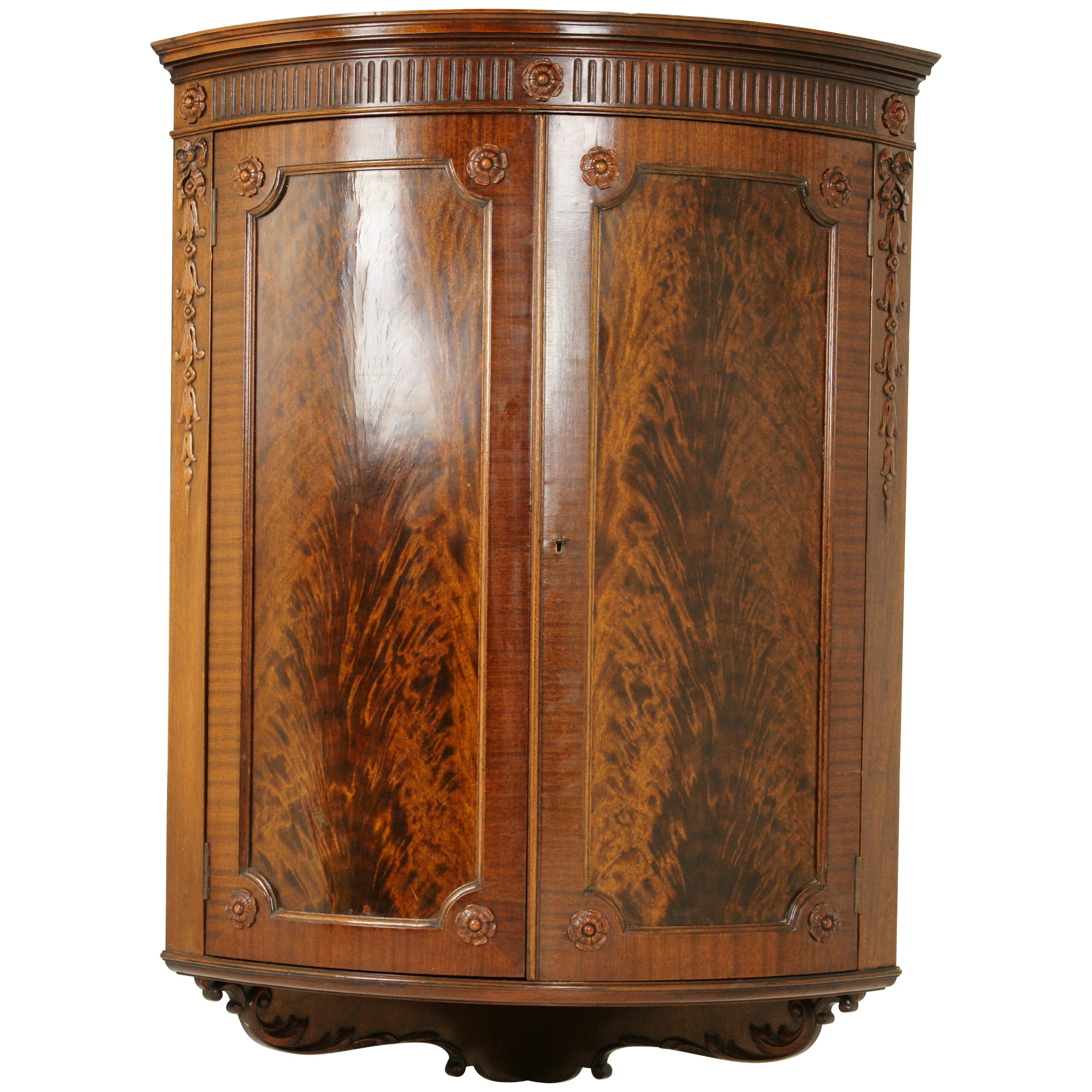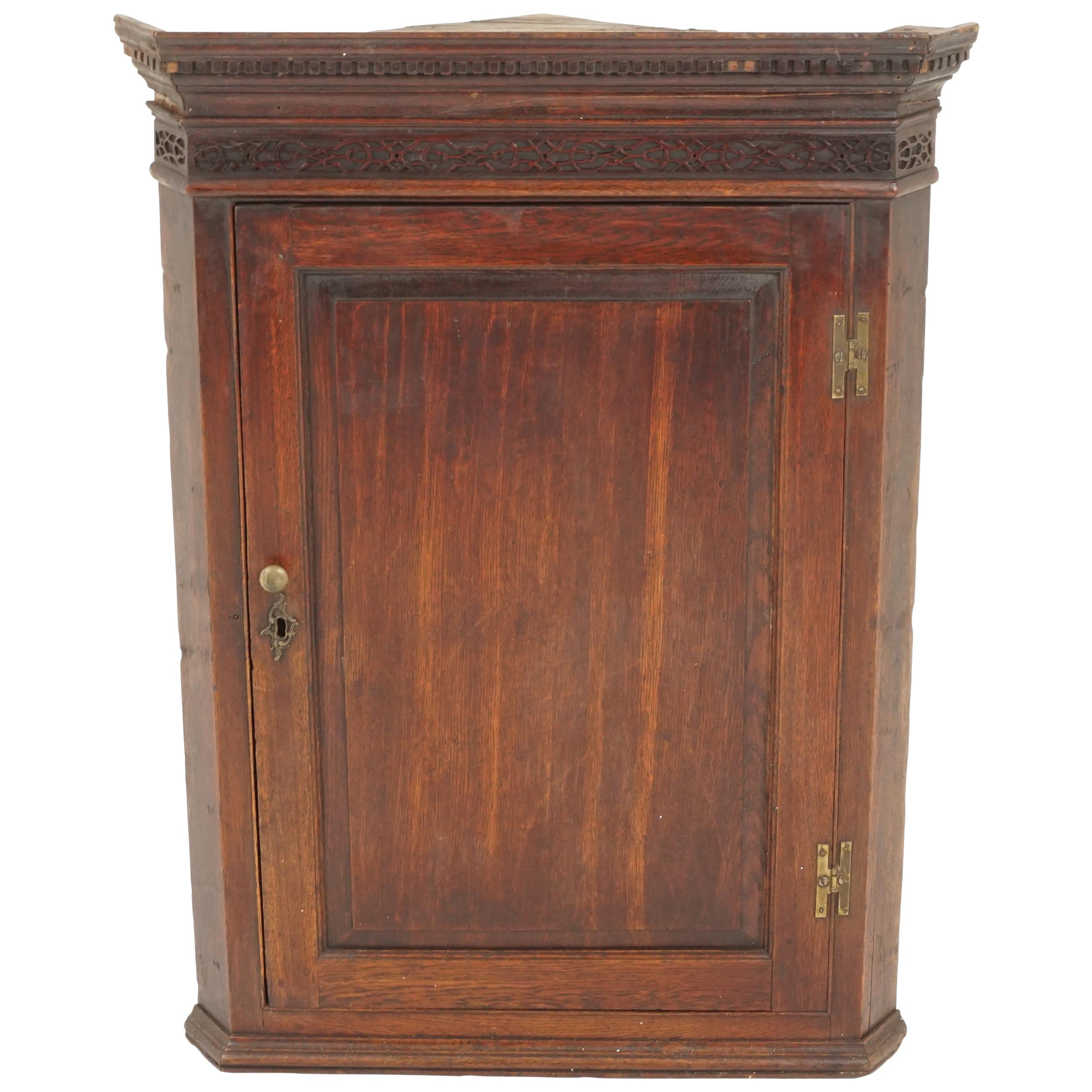Historical Context and Value of Antique Oak Corner Cabinets

Antique oak corner cabinets represent a significant segment of American and European furniture history, reflecting evolving design aesthetics and craftsmanship techniques from the late 19th and early 20th centuries. Their popularity stemmed from their space-saving design, attractive appearance, and inherent practicality, making them a desirable addition to homes of varying sizes and styles. This analysis will explore the historical development, construction methods, and valuation factors associated with these pieces.
Evolution of Corner Cabinet Design in Oak
The design of corner cabinets evolved significantly throughout the late 19th and early 20th centuries. Early examples, often found in Victorian-era homes, tended to be heavily ornamented, featuring intricate carvings, elaborate moldings, and sometimes stained glass panels. These pieces frequently incorporated a combination of wood types, with oak used prominently for its strength and durability, but often accented with other hardwoods like cherry or mahogany. As styles shifted towards the Arts & Crafts movement and the more streamlined aesthetics of the early 20th century, corner cabinet designs became simpler. The emphasis shifted from ornate decoration to clean lines, functional design, and the inherent beauty of the wood grain itself. Oak, with its rich texture and varied grain patterns, remained a popular choice, often showcasing its natural beauty through simpler finishes. Mission-style cabinets, for example, exemplified this minimalist approach, with their emphasis on simple geometric forms and honest craftsmanship. The use of quarter-sawn oak became increasingly popular during this period, highlighting the distinct flecks and figure of the wood.
Craftsmanship Techniques in Antique Oak Corner Cabinets
The construction of antique oak corner cabinets showcases the skill and precision of traditional woodworking techniques. Master craftsmen employed various joinery methods, such as mortise and tenon, dovetail, and bridle joints, to create strong and durable structures. These joints, often unseen, are a hallmark of quality construction and contribute significantly to the cabinet’s longevity. The wood itself was carefully selected and prepared, often employing techniques like steam bending to create curved elements. Finishing techniques varied over time, with early cabinets often showcasing a high-gloss finish, sometimes with elaborate paint decoration. Later pieces, particularly those from the Arts & Crafts era, often featured simpler finishes that highlighted the natural beauty of the oak, such as a natural oil finish or a lightly applied varnish.
Value Determination of Antique Oak Corner Cabinets
The value of an antique oak corner cabinet is influenced by several key factors. Age, condition, maker, and style all play significant roles in determining its worth. Older cabinets, especially those dating from the late 19th century or earlier, generally command higher prices, provided they are in good condition. The condition of the cabinet is crucial; any significant damage, such as cracks, loose joints, or missing parts, will negatively impact its value. Known makers, particularly those with established reputations for quality craftsmanship, can significantly increase a cabinet’s worth. Finally, the style of the cabinet influences its desirability; certain styles, like those associated with specific historical periods or movements, are more sought after by collectors.
| Age | Condition | Maker | Estimated Value |
|---|---|---|---|
| Late 19th Century (1880-1900) | Excellent, original finish | Unknown, high-quality craftsmanship | $3,000 – $6,000 |
| Early 20th Century (1900-1920) | Good, minor repairs | Gustav Stickley (example) | $5,000 – $10,000+ |
| Mid 20th Century (1930-1950) | Fair, some wear and tear | Unknown, mass-produced | $500 – $1,500 |
Restoration and Care of Antique Oak Corner Cabinets

The longevity and beauty of an antique oak corner cabinet depend heavily on proper care and timely restoration. Understanding the nuances of cleaning, maintaining the finish, and addressing minor damage is crucial for preserving its historical value and aesthetic appeal. Neglect can lead to irreversible deterioration, diminishing both its monetary worth and its inherent charm. This section details the methods and materials required for the responsible upkeep and restoration of these treasured pieces.
Cleaning and Maintaining the Finish of Antique Oak Corner Cabinets
Regular cleaning is paramount to preventing the accumulation of dust, grime, and potential damage. Avoid harsh chemicals and abrasive cleaners, as these can strip the original finish and damage the wood. Instead, opt for a gentle approach using a soft, lint-free cloth slightly dampened with distilled water. For stubborn dirt, a mild solution of distilled water and a drop of mild dish soap can be used, but ensure thorough rinsing and drying afterward. Once cleaned, apply a thin layer of high-quality furniture polish specifically designed for antique wood finishes. This will help protect the wood from drying out and maintain its luster. Avoid using silicone-based polishes, as these can build up over time and make future cleaning more difficult. Regular dusting, ideally weekly, will prevent the buildup of dirt and minimize the need for more intensive cleaning. Direct sunlight should be avoided, as prolonged exposure can cause fading and cracking of the finish.
Restoring Minor Damage to Antique Oak Corner Cabinets
Minor scratches and loose joints are common issues with antique furniture. Addressing these promptly prevents further damage. For superficial scratches, a carefully applied touch-up using a wood stain matching the cabinet’s original color can often effectively conceal the imperfection. Apply the stain sparingly and allow it to dry completely before buffing gently with a soft cloth. For deeper scratches, wood filler might be necessary. Choose a filler compatible with oak and carefully apply it, following the manufacturer’s instructions. Once dry, sand it smooth and apply stain to match the surrounding area. Loose joints can often be tightened using wood glue. Apply the glue sparingly to the joint, clamp it firmly, and allow it to dry completely before removing the clamps. If the joint remains loose after this process, professional intervention may be necessary. Remember, always test any cleaning solution or restoration product in an inconspicuous area first to ensure it does not damage the finish.
Materials and Tools for Restoration and Care
The proper materials and tools are essential for successful restoration and maintenance. This includes soft lint-free cloths, distilled water, mild dish soap, high-quality furniture polish (non-silicone based), wood stain (matching the cabinet’s original color), wood filler (compatible with oak), wood glue, fine-grit sandpaper, small artist’s brushes, clamps, and protective gloves.
Safety Precautions: Always wear protective gloves when handling cleaning solutions, wood stains, or wood glue. Work in a well-ventilated area to avoid inhaling fumes. Use caution when handling sharp tools like sandpaper. Dispose of cleaning solutions and other materials responsibly according to local regulations. If you are unsure about any aspect of the restoration process, consult a professional furniture restorer.
